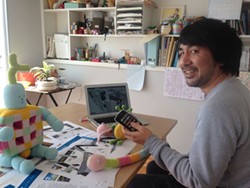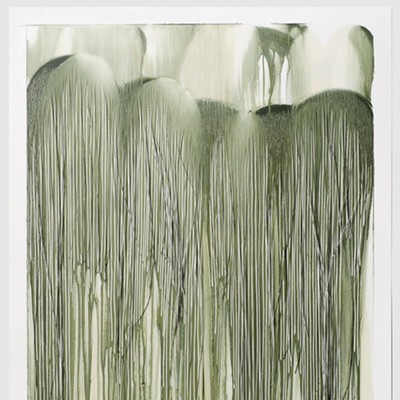KEITA TAKAHASHI is a living video game legend.
He’s the man behind Katamari Damacy, the 2004 sleeper hit game that was so influential it was one of the first games acquired for the permanent collection at the Museum of Modern Art.
Takahashi got his start at Musashino Art University in Tokyo, Japan, where he received a degree in fine art and sculpture. However, one of his student projects inspired him to move into the video game world, and he went on to work at Namco, one of the most influential game design companies in the world.
His childlike style of game design is a welcome respite from the violence that dominates the video game industry today.
“Keita Takahashi: Zooming Out” is the first museum survey of his work, presented as the headliner of the Telfair’s PULSE Art + Technology Festival.
The exhibition will include early sculpture and animation work, designs for a playground, and the release of Takahashi’s long-awaited game, Wattam.
At the interactive exhibition, viewers can play two of Takahashi’s games, Alphabet and Tenya Wanya Teens.
Instead of traditional handheld controllers, the games use 16-button controllers on long boards. Telfair built the 26-button controller for Alphabet especially for this exhibition.
Alphabet can be played by up to 26 people, one for each letter of the alphabet, which race each other to the finish line.
Tenya Wanya Teens follows two awkward teenage boys through their daily life. In the game, a collaboration with New York-based Babycastles, players control the boys’ movements with buttons that make them play guitar, look at dirty magazines, and talk to girls, among other things.
Adding to their awkwardness, the buttons constantly move, so pushing the wrong button could make the boys accidentally urinate on their crush.
We spoke with Takahashi last week.
What made you decide to switch from fine art and sculpture to video game design?
I had an interest and concern in environmental problems when I was an art student. Of course, I am now, too. One day, I saw other people who were in the same sculpture throw away their sculptures into a big trash bin. I know those were student sculptures, but I hated to do that, and I thought I should not make such garbage sculptures, even during the innocent student period.
After a long brainstorming [session] by myself, I realized I would not have to throw my stuff away if I could keep using my sculptures as tools in my life. So I tried to put some useful functions into my stuff. And then I made a goat-shaped flower pot which drains water from the boobs. At the show and tell, other students just laughed and smiled at my goat. They liked the draining water function of the boobs more than the idea of the goat-shaped flowerpot because it’s funny, and I realized that making people smile is kind of more important than functions. So I made other silly things like a low table transformer, a hippo-shaped tissue box cover, and so on.
When I was in the third grade, I was looking for the job that makes people smile and something new for me. Then I found the video game industry. I was playing video games when I was a kid, and I remembered it was fun, so I decided to go to the video game world.
What was it like for Katamari Damacy to be so popular?
That was an unexpected thing. I just want to say thank you for everyone who played Katamari.
You’re known for your colorful, child-like style. Why is that the style you chose to go with?
I didn’t choose it—that just comes from my art skill limitation.
How has your creative style changed over the years?
Literally nothing has changed from when I made a goat-shaped flower pot. Making flower pots and making video games are the same thing for me.
What do you have planned for future games?
I designed a playground before, but that was cancelled for budget reasons. Since then, I decided I will be a billionaire someday and make my dangerous playgrounds with my own money. So I’m going to follow the trend for success. I might make battle royal games or addictive puzzle games for mobile phones.
































